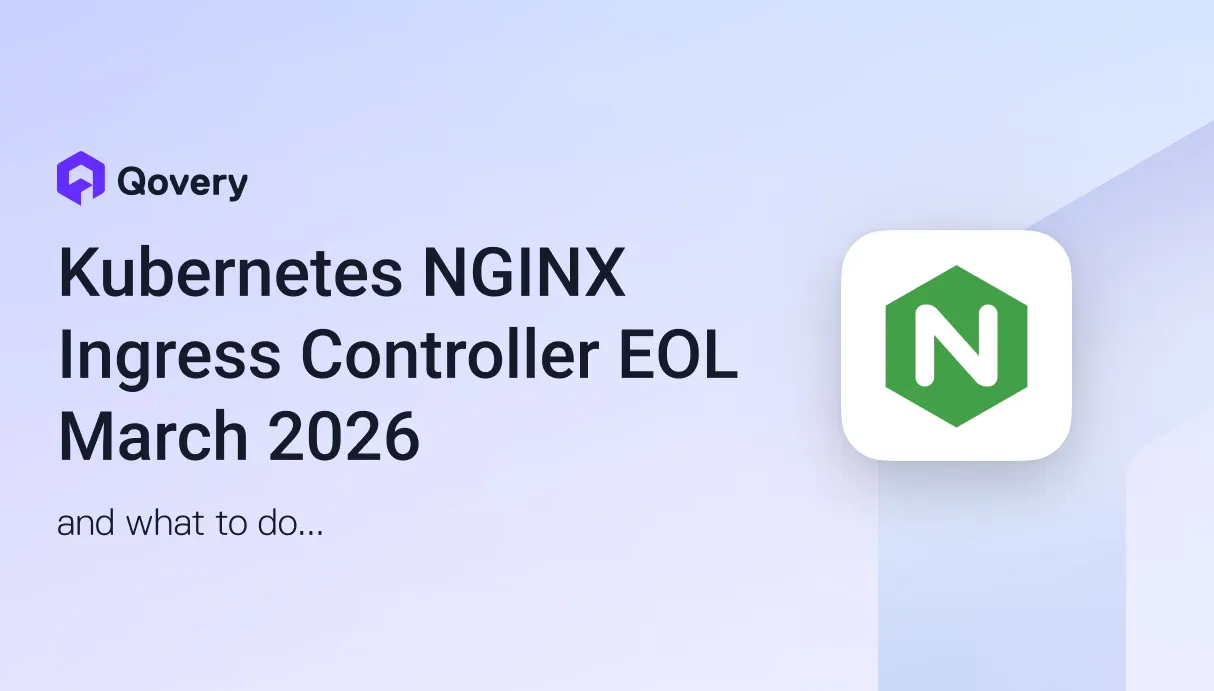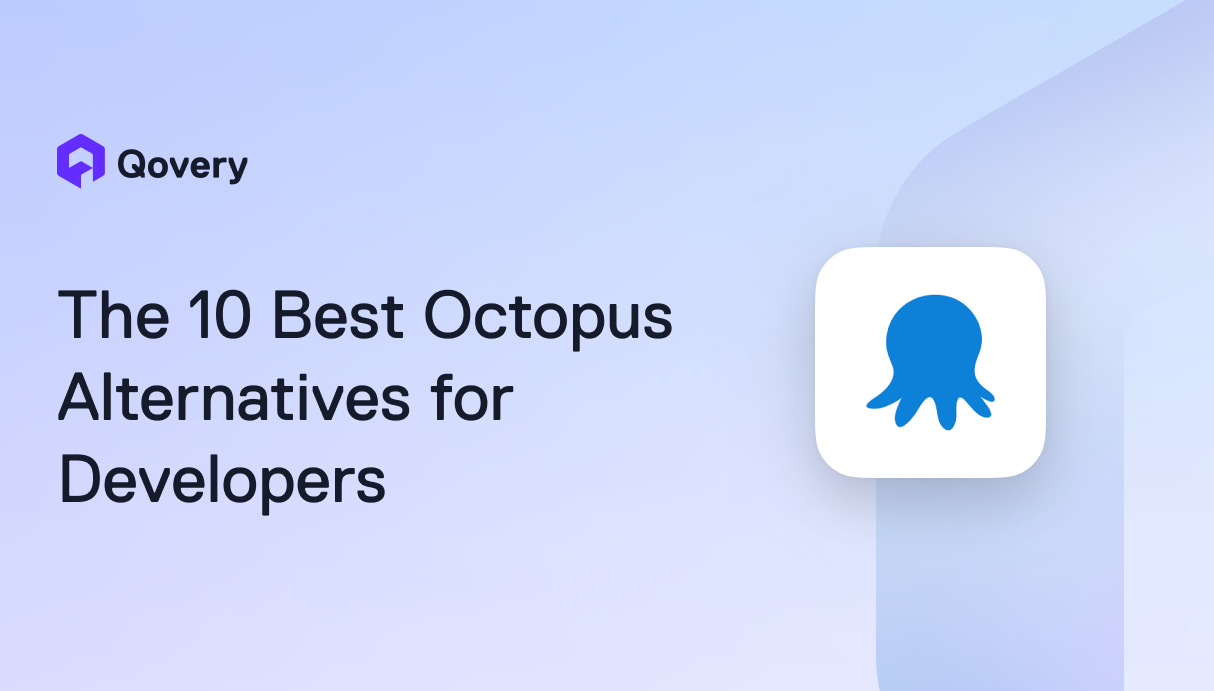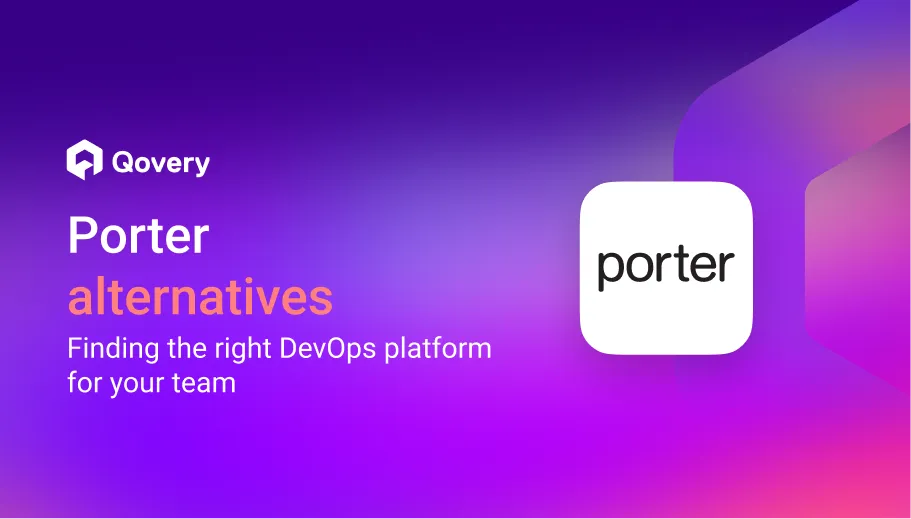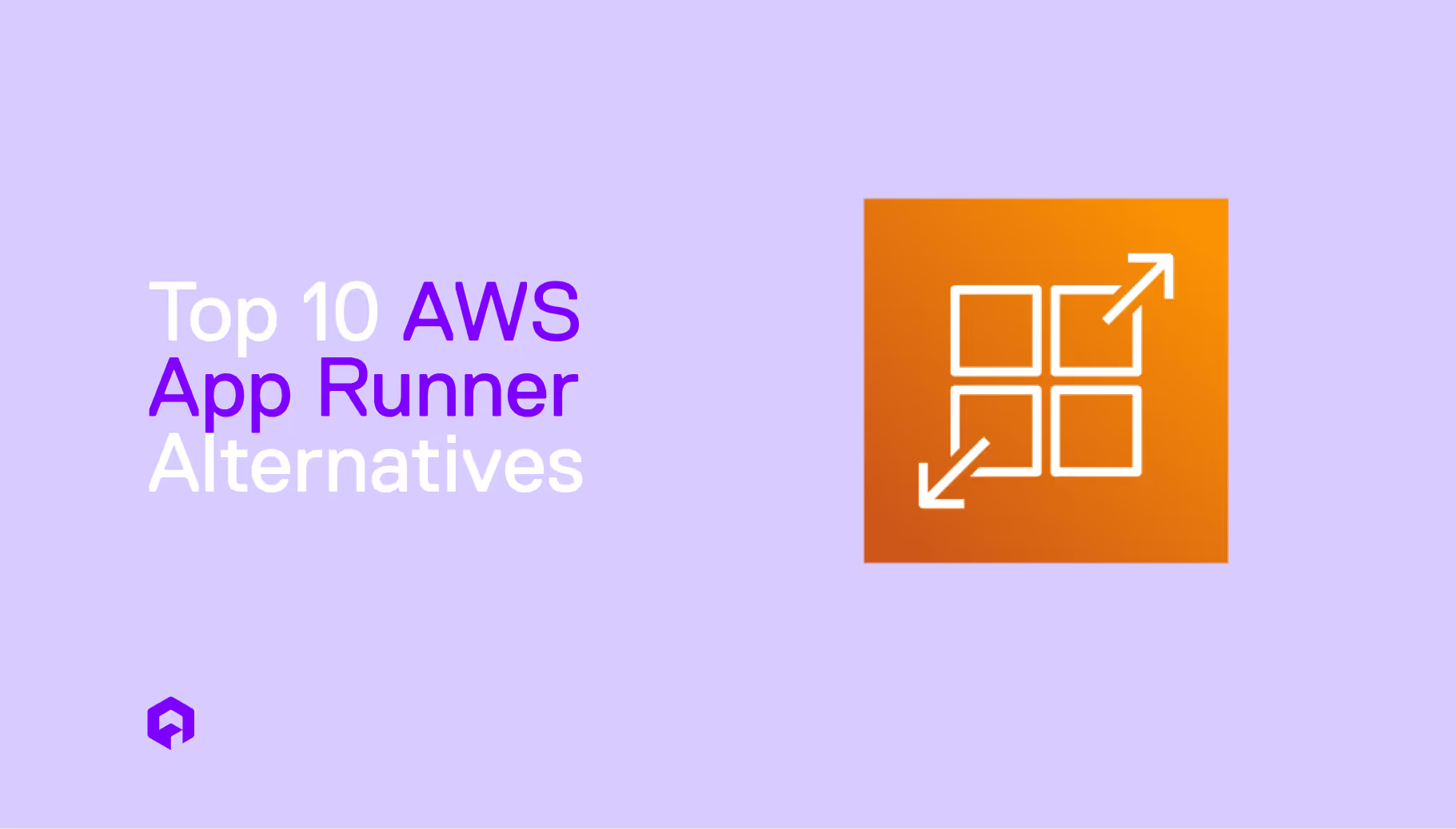



10 Best EKS Alternatives: Simplifying Kubernetes for Modern Development

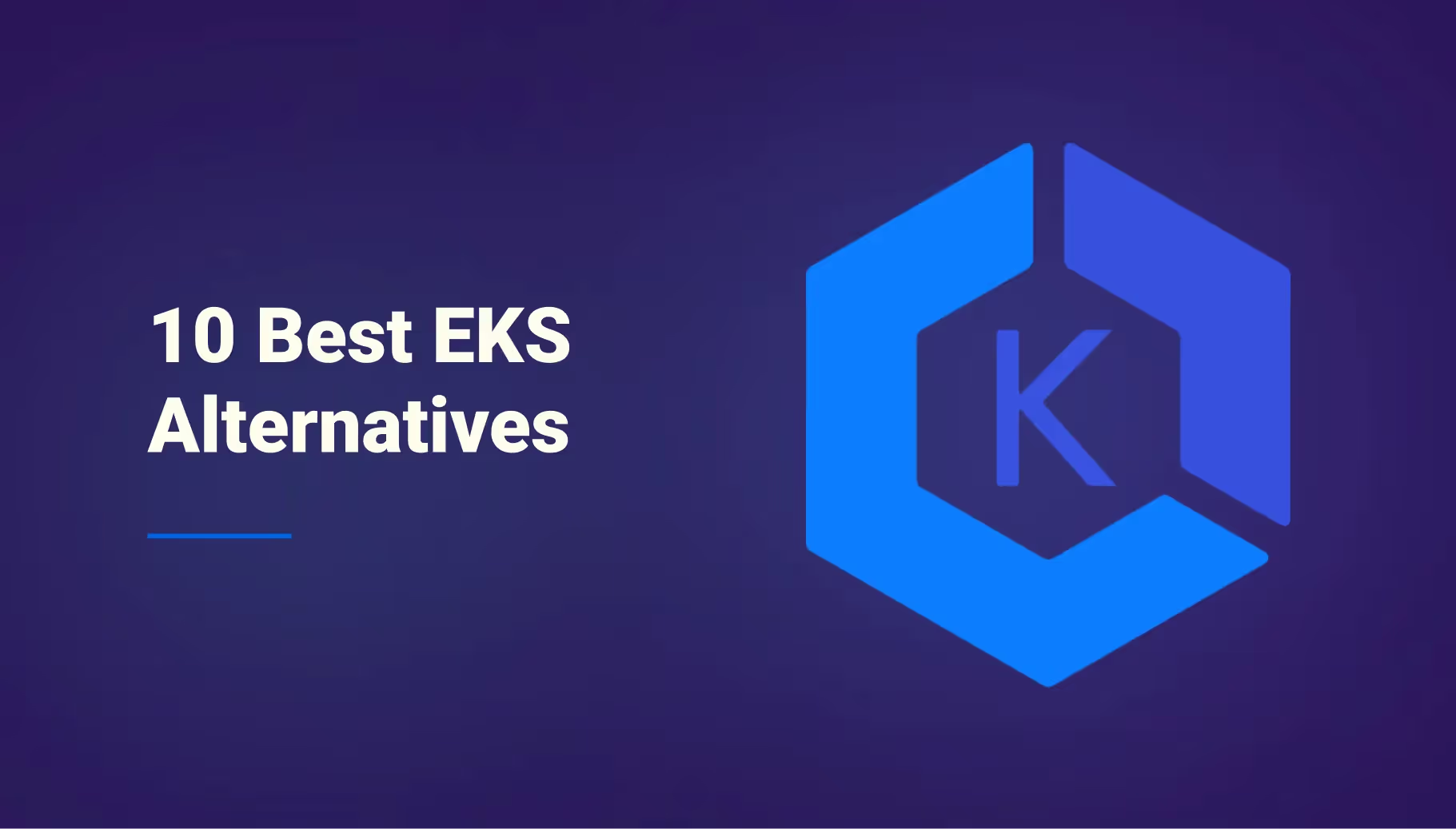

Key Points:
- The primary motivation for seeking EKS alternatives is often to reduce the immense operational overhead and cost associated with self-managing a robust Kubernetes environment.
- Qovery stands out by transforming the complexity of Kubernetes into a simplified Internal Developer Platform (IDP), offering automated deployment, testing/ephemeral environments, and significant cloud cost savings (up to 15% reduction).
- Alternatives fall into three main categories: Managed (GKE, DOKS, AKS), Simplified PaaS/IDP (Qovery, OpenShift, Platform9), and Management Tools (Rancher, Portainer, Docker Swarm).
- Choices range from highly cost-effective and beginner-friendly options (DOKS, Docker Swarm) to solutions offering maximum customizability but high operational cost (Self-managed Kubernetes).
Amazon Elastic Kubernetes Service (EKS) offers an indispensable managed Kubernetes solution, but its power comes with significant cost and complexity. For many organizations, the administrative burden of operating the clusters—even if the control plane is managed—translates into slower development cycles and unexpectedly high cloud bills.
If your team is looking to optimize costs, regain developer focus, or simply achieve a better balance between control and operational simplicity, exploring EKS alternatives is essential.
This article details the top 10 alternatives to EKS, ranging from competing managed services and user-friendly management tools to high-level Internal Developer Platforms (IDPs) that transform the entire path to production.
1. Qovery
Qovery is an Internal Developer Platform (IDP) that simplifies the path to production for developers. It provides testing, and ephemeral environments, and drives action to improve software.

Pros:
- Automated CI/CD Integration: Qovery seamlessly integrates with popular CI/CD tools, such as GitHub Actions, to fully automate the application build and deployment process.
- Automatic and Reliable Scaling: Applications automatically scale based on demand, ensuring reliable performance and eliminating downtime, even during high-traffic events.
- Built-in Cost Optimization: Implement cost-effective solutions instantly, including the ability to shut down staging environments overnight, which can save up to 40 hours per week in wasted resources and reduce cloud bills by 15% or more.
- Fixed-Price Networking: The platform mutualizes load balancers within the same environment, offering a fixed price of around $40 per load balancer per environment, simplifying networking costs.
- Support for ARM Instances: Qovery supports ARM instances, enabling organizations to leverage newer, highly efficient infrastructure to reduce cloud computing costs by up to 60%.
Cons:
- Qovery may lack some features like the free control plane offered by DOKS, and the comprehensive environment for managing containers provided by OpenShift.
Use Cases:
- Engineering Teams: Organizations prioritizing developer velocity and faster time-to-market.
- Cost Optimization: Companies looking to drastically reduce cloud spending on staging and testing environments.
- Streamlined CI/CD: Teams needing integrated, automated CI/CD and deployment workflows.
Qovery stands out among these alternatives because it focuses on improving developer productivity. It simplifies the deployment process, provides cost-effective solutions, and offers a range of integrations and features that make it a powerful and versatile platform for deploying and managing applications. This makes Qovery a top choice for engineering teams.
Ready to stop paying the EKS tax and start shipping faster?
🚀 Sign up for Qovery's trial and experience simplified DevOps automation.
📅 Book a personalized demo to discuss how Qovery can eliminate Kubernetes complexity for your team.
2. Google Kubernetes Engine (GKE)
GKE is a Google-managed implementation of the Kubernetes open-source container orchestration platform. It leverages Google’s experience operating production workloads at scale.
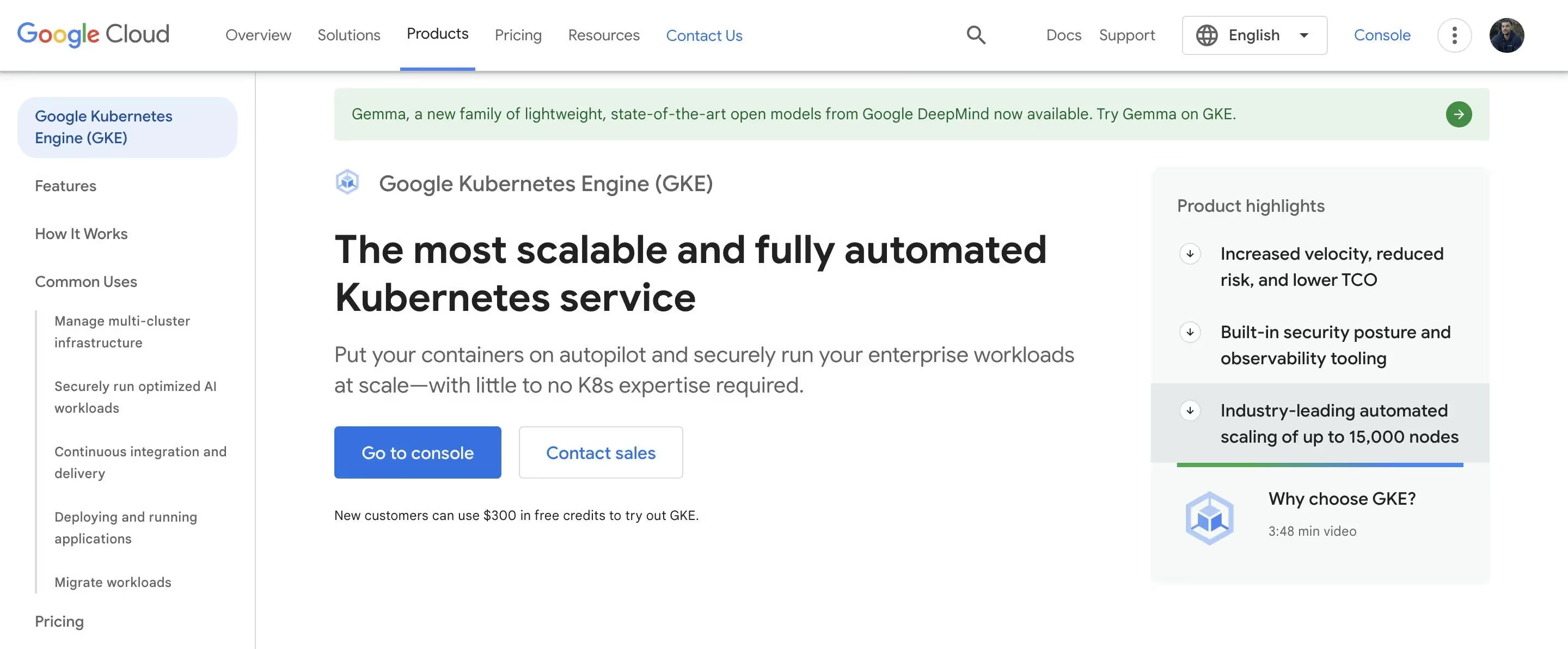
Pros:
- Fully managed by Google, providing robust infrastructure support with high availability and automatic scaling.
- Seamlessly integrates with Google Cloud services, offering advanced networking, storage, and security features.
- Simplified operations with automated upgrades, repairs, and security patches.
Cons:
- Vendor lock-in risk, limiting flexibility to switch cloud providers without significant effort.
- May incur higher costs for certain configurations or usage patterns compared to other providers.
Use Cases:
- Robotics: Automating deployment and management of robotics application workloads across a distributed infrastructure.
- Healthcare: Secure and compliant hosting of patient data management systems with high availability.
- Retail: Scalable infrastructure for e-commerce platforms to handle varying loads, especially during peak shopping seasons.
- Education: Deployment of online learning platforms and management systems with the ability to scale as student numbers fluctuate.
- Gaming: Hosting multiplayer gaming servers with the capability for rapid scaling in response to user demand.
- Financial Services: Running high-security financial applications requiring compliance with industry regulations and standards.
3. DigitalOcean Kubernetes (DOKS)
DOKS is a managed Kubernetes service by DigitalOcean. It allows you to deploy Kubernetes clusters without handling the complexities of the control plane and containerized infrastructure.
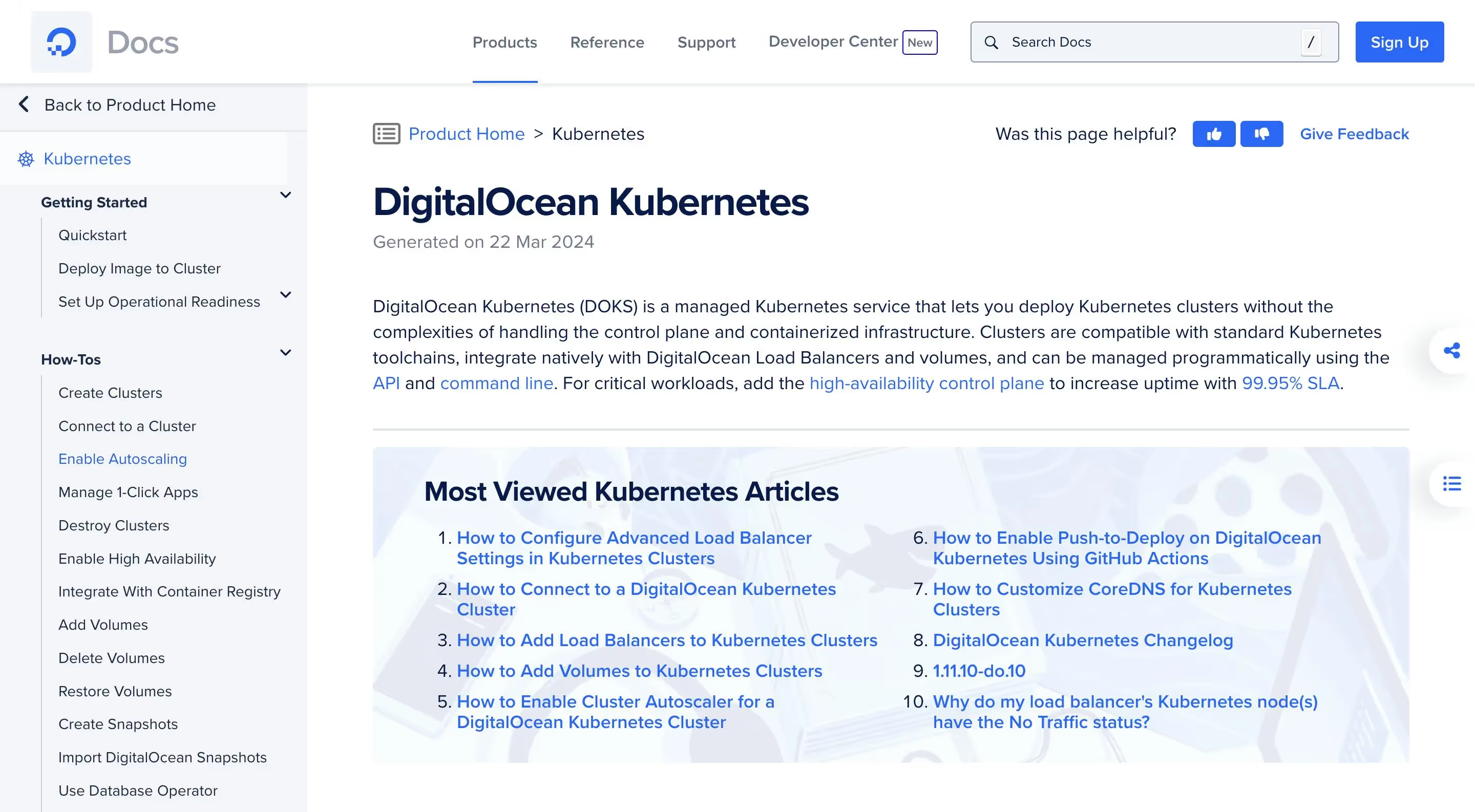
Pros:
- User-friendly management interface, ideal for small to medium-sized projects or startups.
- Cost-effective pricing model, providing straightforward billing and affordable scaling options.
- Tight integration with DigitalOcean's marketplace and other services for a cohesive cloud experience.
Cons:
- Limited to DigitalOcean's ecosystem, affecting flexibility and portability of workloads.
- Some advanced features available in other Kubernetes services might be missing or limited.
Use Cases:
- Startups: Quick deployment of new applications with minimal infrastructure setup.
- Development/Test Environments: Easy setup of temporary environments for testing and development purposes.
- Web Applications: Hosting and scaling web applications with straightforward access to database and storage solutions.
4. Amazon Elastic Container Service (ECS)
ECS is a fully managed container orchestration service provided by Amazon. It simplifies the deployment, management, and scaling of containerized applications.
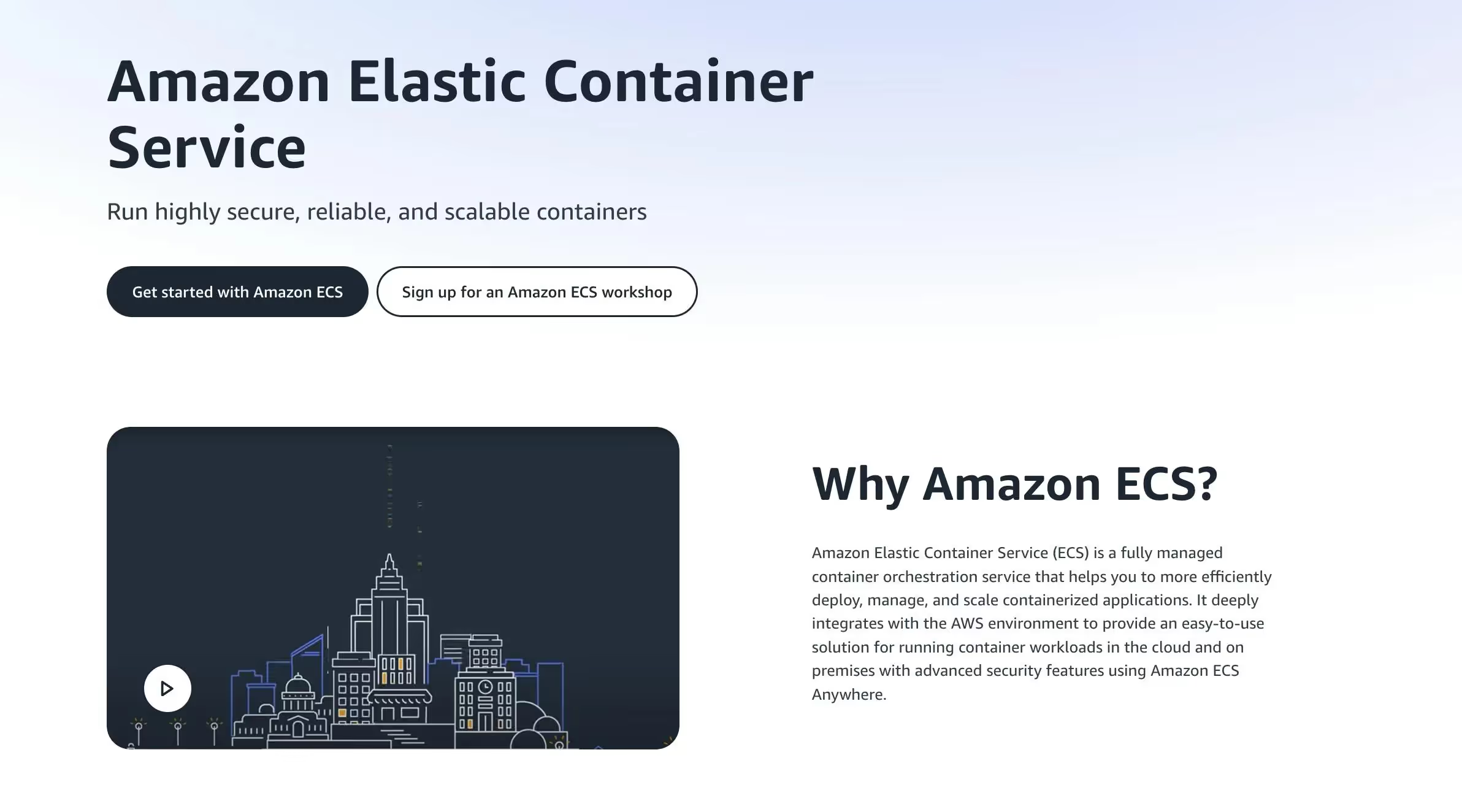
Pros:
- Deep integration with AWS services, offering a seamless experience for existing AWS infrastructure.
- Native support for AWS Fargate, allowing for serverless computing for containers.
- Fine-grained control over networking, security, and monitoring through AWS services.
Cons:
- Limited to AWS, potentially complicating migrations away from Amazon's ecosystem.
- Some users may find the service less intuitive compared to pure Kubernetes solutions.
Use Cases:
- Microservices Architectures: Running and managing microservices-based applications with seamless integration into AWS's ecosystem.
- Batch Processing Jobs: Efficient management of batch processing and workload scheduling.
- Continuous Integration/Continuous Deployment (CI/CD) Pipelines: Leveraging ECS in automated pipelines for building, testing, and deploying applications.
5. OpenShift (by Red Hat)
OpenShift is a containerized application platform by Red Hat. It allows enterprises to accelerate and streamline application development, delivery, and deployment on-premise or in the cloud.
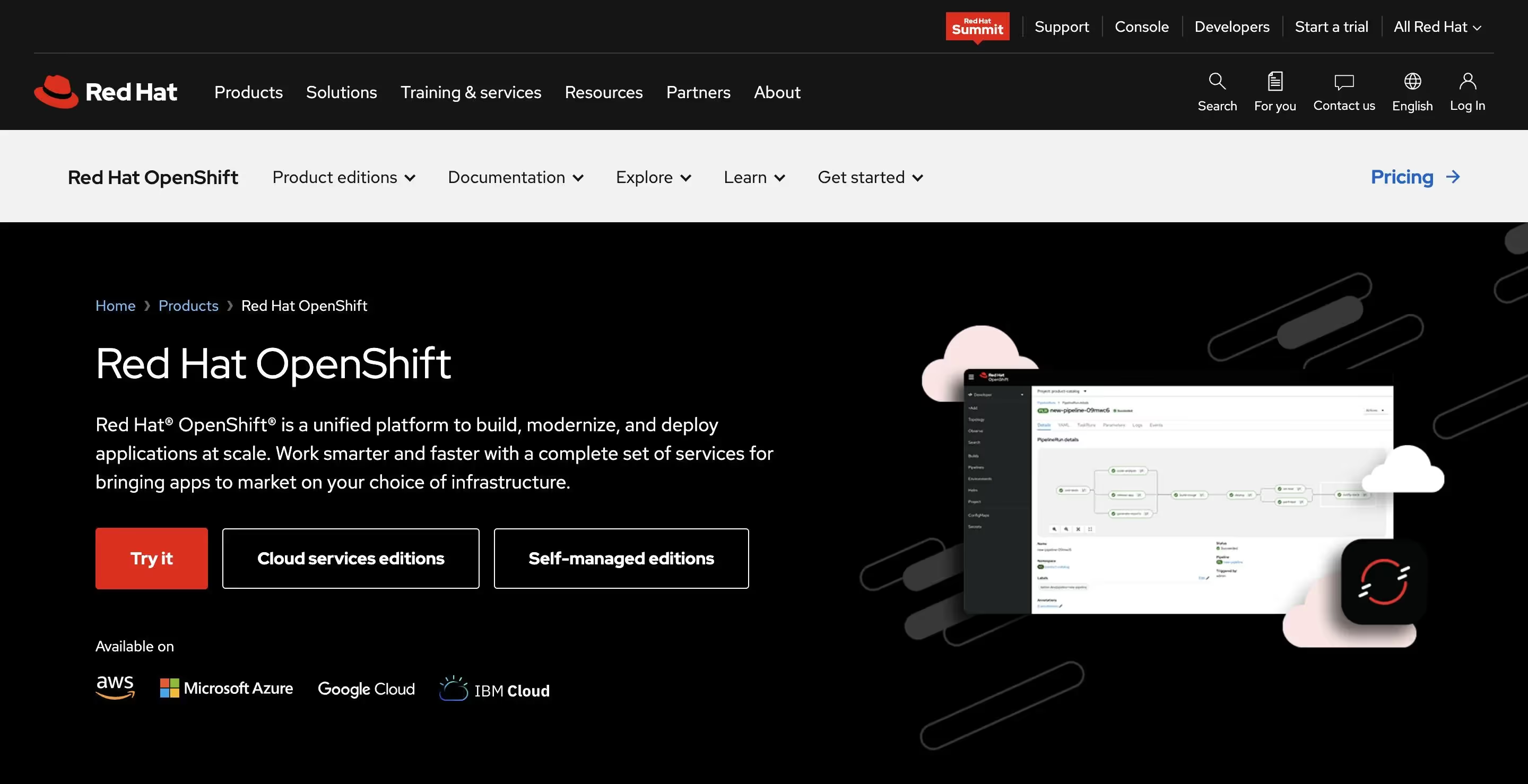
Pros:
- Comprehensive platform offering development and operational tools on top of Kubernetes.
- Supports a wide range of programming languages and frameworks, facilitating development and deployment processes.
- Advanced security features, including role-based access control (RBAC) and Security-Enhanced Linux (SELinux) policies.
Cons:
- The complexity of the platform might require additional resources for setup, configuration, and ongoing management.
- Potentially higher costs associated with licensing and operation compared to other Kubernetes services.
Use Cases:
- Enterprise Application Development: Enterprises requiring a secure and scalable platform for developing and deploying large-scale applications.
- Regulated Industries: Organizations in healthcare, finance, and government sectors need strict security and compliance capabilities.
- Hybrid Cloud Environments: Businesses looking to orchestrate workloads across on-premises data centers and public clouds.
6. Rancher
Rancher is a Kubernetes management tool that helps you deploy and run clusters anywhere and on any provider.
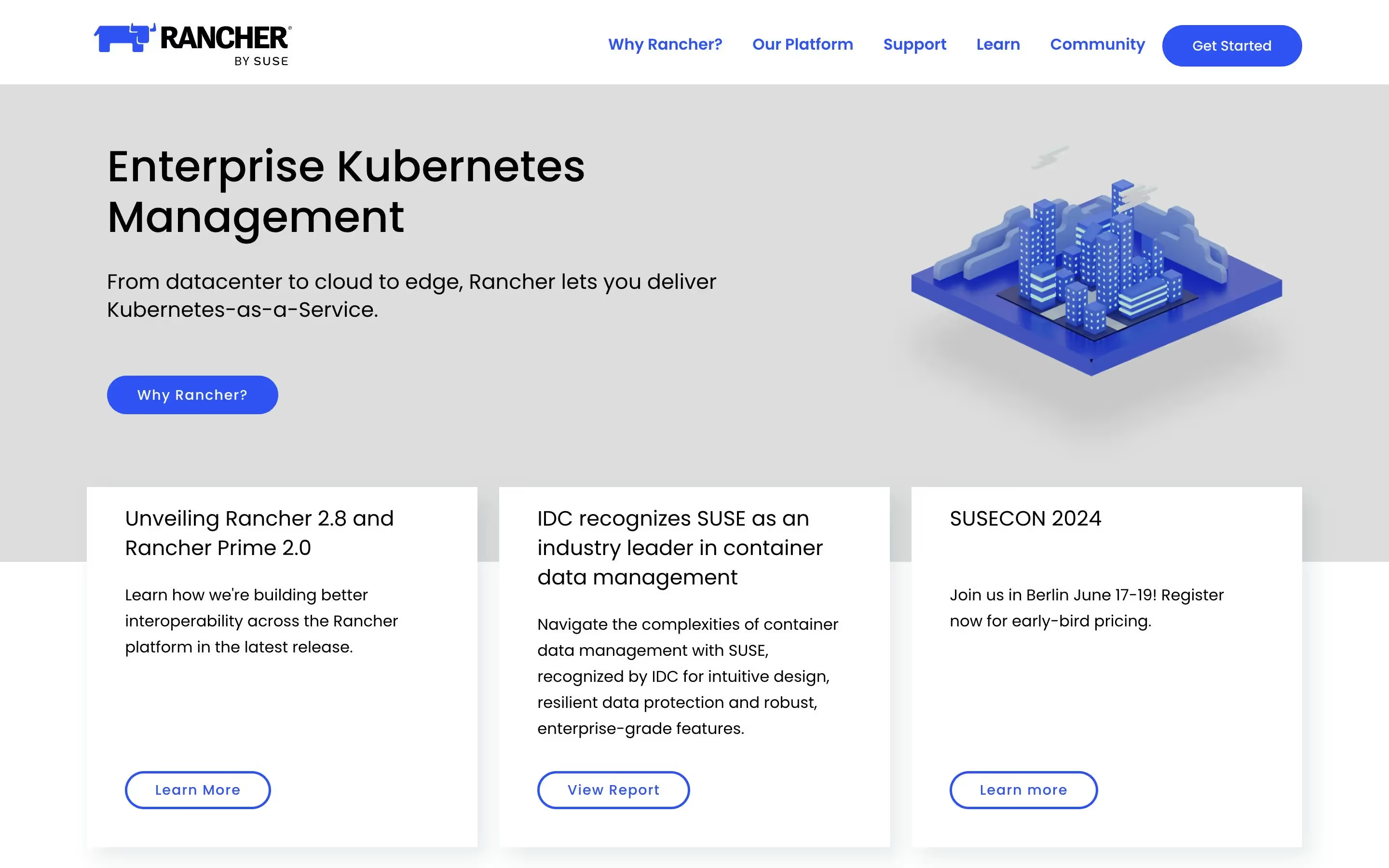
Pros:
- Provides a unified platform to manage Kubernetes clusters across on-premises, cloud, and edge environments.
- Built-in multi-tenancy support for managing multiple projects and teams within the same cluster.
- Simplifies the deployment of Kubernetes clusters with a user-friendly interface and extensive documentation.
Cons:
- While Rancher itself is not overly complex, the underlying infrastructure it manages (Kubernetes) can still be challenging for new users.
- Some advanced configurations may require deep Kubernetes knowledge to implement effectively.
Use Cases:
- Hybrid Cloud Management: Seamlessly manage Kubernetes clusters across various environments, enabling consistent operations and policy enforcement.
- DevOps Automation: Automate deployment, scaling, and management of containerized applications, integrating with CI/CD tools for streamlined workflows.
- Edge Computing: Deploy and manage workloads on edge devices with minimal resources, leveraging Kubernetes' flexibility.
7. Portainer
Portainer is a lightweight management UI for Docker environments. It provides a graphical interface for Docker and supports other container runtimes, such as Kubernetes.
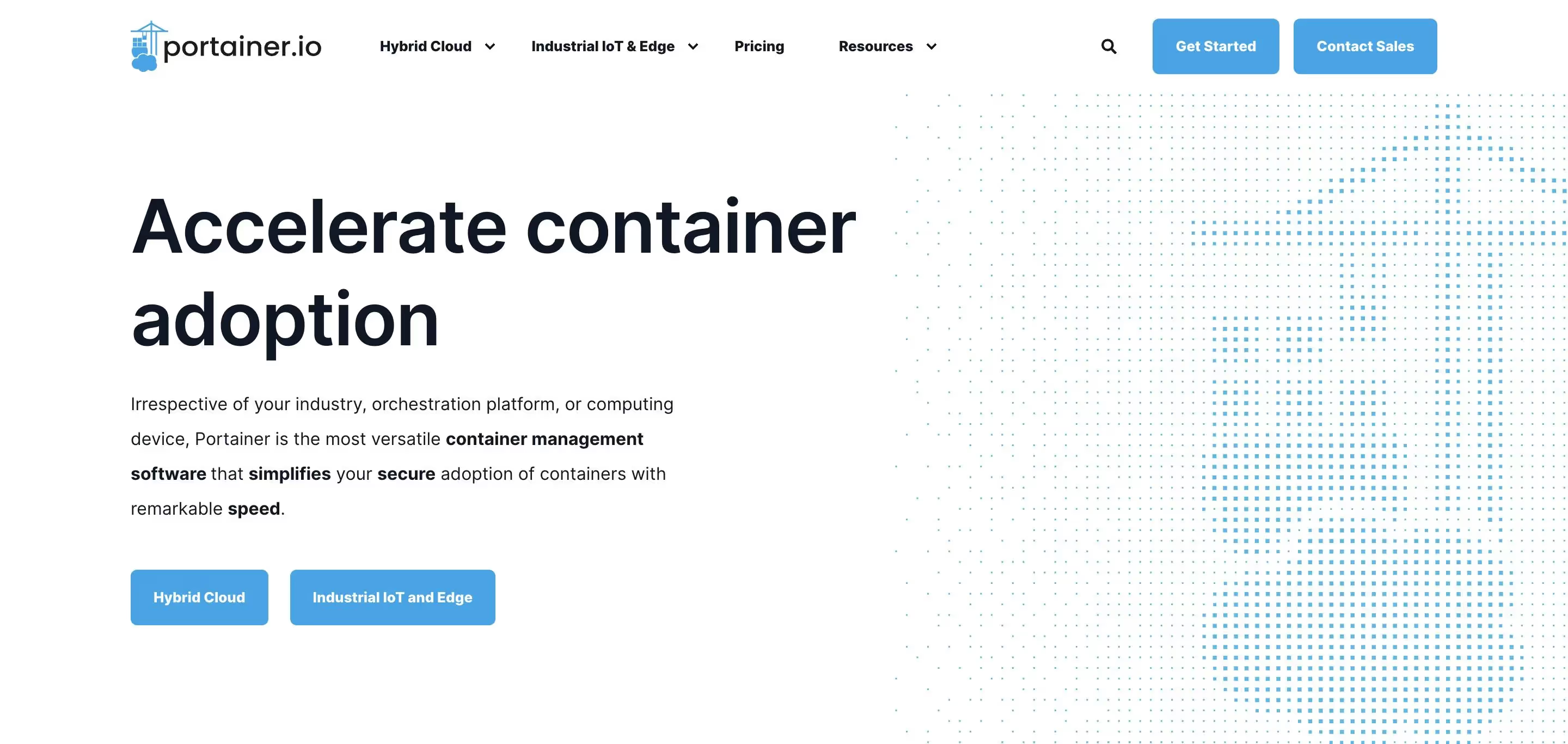
Pros:
- Simplifies container management with an intuitive web-based UI, lowering the barrier to entry for managing Docker and Kubernetes.
- Offers comprehensive features for managing containerized applications, including image management, network configuration, and access controls.
- Community Edition is free and open-source, with an Enterprise Edition available for advanced use cases.
Cons:
- While Portainer simplifies many tasks, complex Kubernetes configurations might still require CLI interventions.
- The breadth of features and options available can be overwhelming for beginners, despite the user-friendly interface.
Use Cases:
- Small to Medium Businesses (SMBs): Manage Docker containers and Kubernetes clusters without extensive infrastructure teams.
- Educational Purposes: Teach containerization concepts and Kubernetes management with an accessible interface.
- Development Teams: Streamline the development process by allowing developers to easily manage containers, test environments, and deployments.
8. Platform9
Platform9 is a SaaS-managed cloud platform that enables consistent deployment, management, and updating of your Kubernetes environment on any infrastructure.
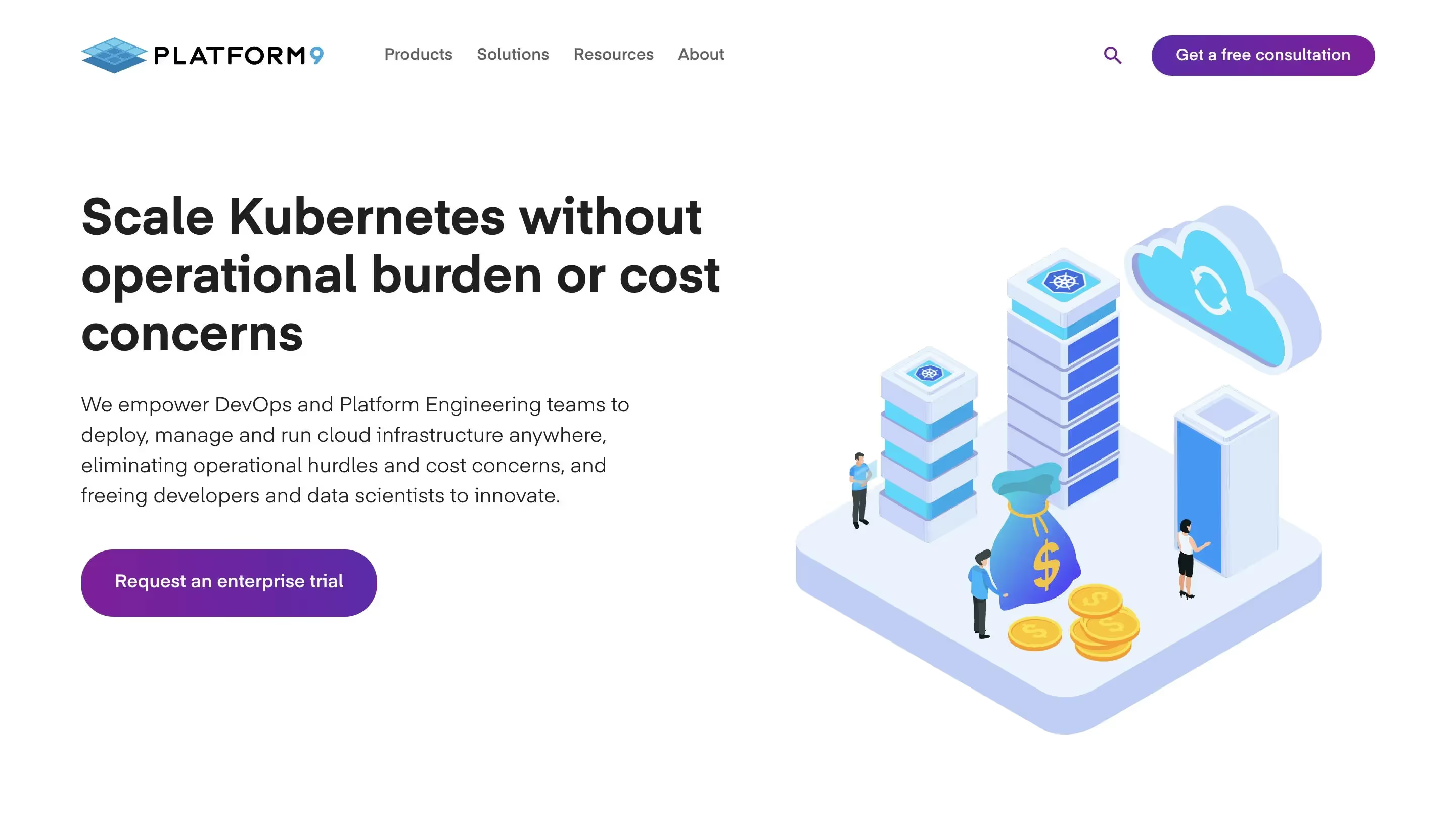
Pros:
- Offers a SaaS-managed Kubernetes service, reducing the operational burden of running Kubernetes.
- Supports multi-cloud and on-premises environments, providing flexibility in deployment options.
- Includes built-in monitoring, alerting, and troubleshooting tools to ensure the health and performance of clusters.
Cons:
- The managed service model may introduce a dependency on Platform9 for critical aspects of infrastructure management.
- Customization options might be limited compared to a self-managed Kubernetes setup, potentially impacting specific use cases.
Use Cases:
- Multi-Cloud Strategies: Organizations looking to deploy and manage Kubernetes clusters across different cloud providers.
- On-Premises Kubernetes: Companies requiring Kubernetes clusters on their own data centers but want to offload the management overhead.
- Rapid Scaling: Businesses need to quickly scale their Kubernetes infrastructure up or down based on demand without significant operational overhead.
9. Kubernetes (Self-managed)
Kubernetes is an open-source platform for managing containerized workloads and services. It facilitates both declarative configuration and automation and has a large, rapidly growing ecosystem.
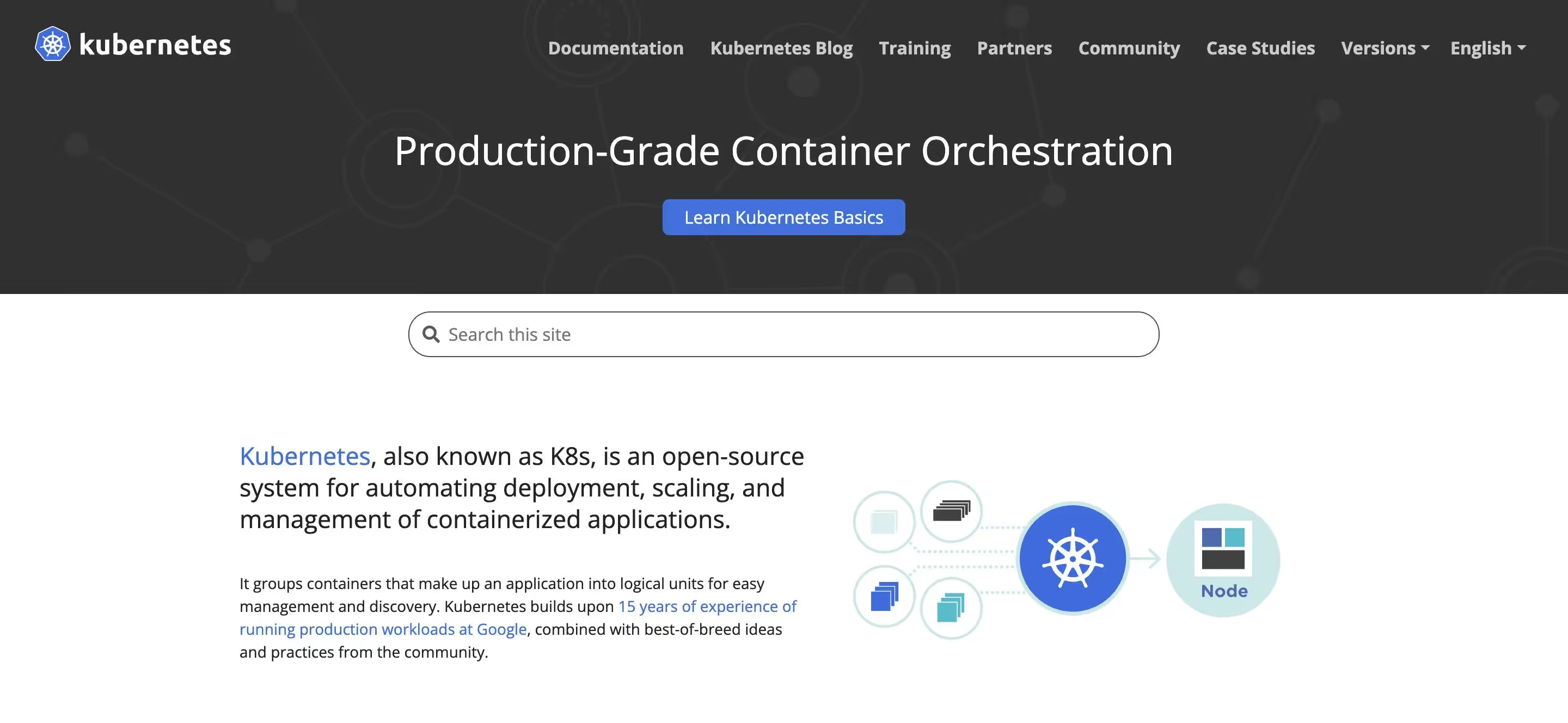
Pros:
- Complete control over the Kubernetes environment, allowing for customization and optimization according to specific requirements.
- No vendor lock-in, providing the freedom to choose underlying infrastructure providers.
- The community support is vast, with extensive documentation and resources available for troubleshooting and learning.
Cons:
- Requires significant expertise and resources to set up, manage, and maintain, especially regarding security and high availability.
- Operational overhead is higher compared to managed services, as the team is responsible for upgrades, patching, and infrastructure management.
Use Cases:
- Customized Cloud Infrastructure: Organizations requiring specific configurations that are not supported by managed services.
- High-Regulation Industries: Companies in sectors like finance, healthcare, and government need stringent control over their data and infrastructure for compliance.
- Large Enterprises: Businesses with the resources to manage their infrastructure and prefer to maintain control over their cloud environment.
10. Docker Swarm
Docker Swarm is a container orchestration tool built into Docker. It allows you to manage multiple Docker hosts in the form of a swarm, enabling automated deployment and scaling of containers.
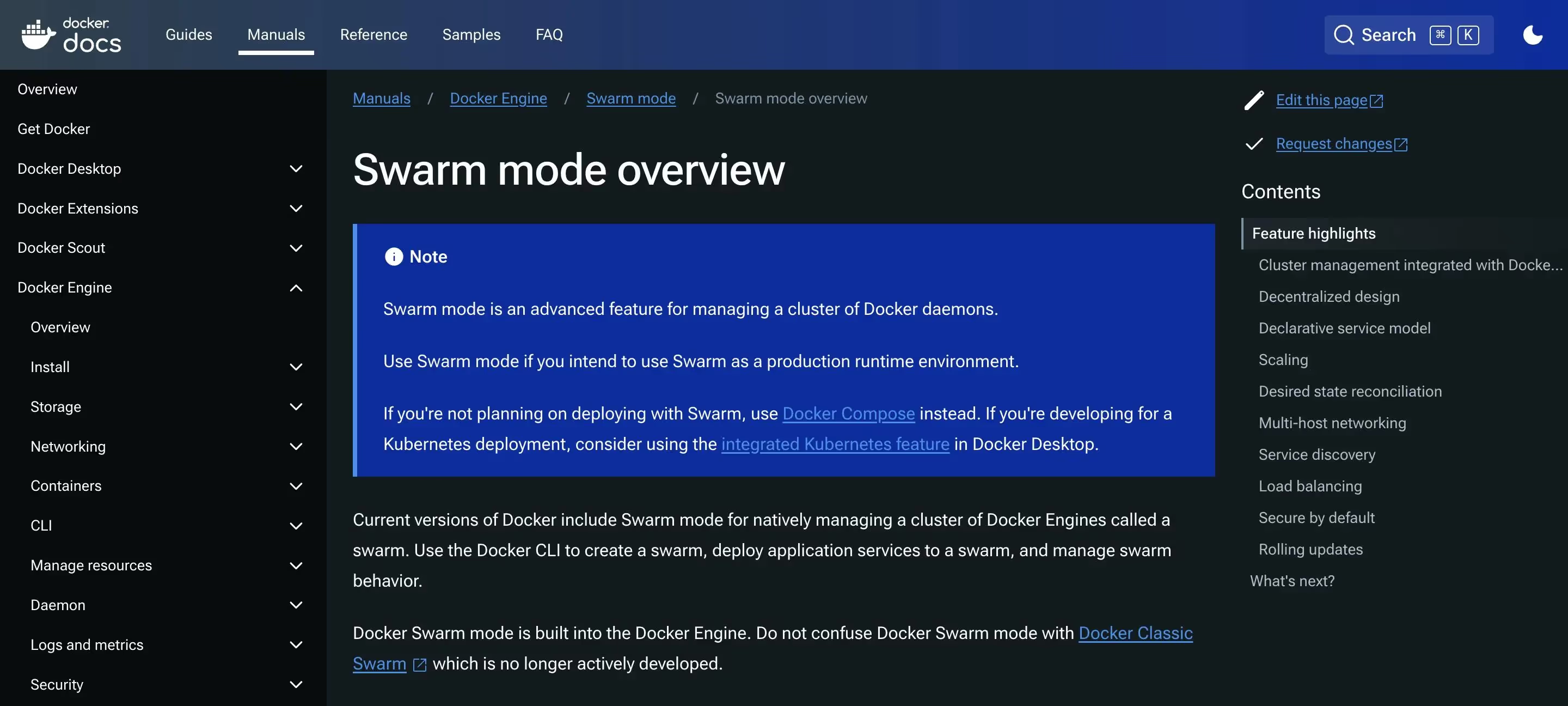
Pros:
- Easier to configure and manage compared to Kubernetes, making it suitable for smaller teams or projects.
- Integrated directly into Docker, providing a seamless experience for Docker users.
- Less resource-intensive, suitable for environments with limited resources.
Cons:
- Offers fewer features compared to Kubernetes, particularly in terms of scalability and complex deployment strategies.
- The community and ecosystem around Docker Swarm are smaller than Kubernetes, which might affect finding resources and tooling.
Use Cases:
- Simplified Container Management: Small teams or projects looking for an easy way to start with container orchestration without the complexity of Kubernetes.
- Development Environments: Developers require a lightweight and straightforward environment for building and testing applications.
- Small to Medium Production Deployments: Applications that do not require the high scalability and complex deployment strategies offered by Kubernetes.
Comparison Table
Here is the comparison table summarizing the key features of all the EKS alternatives.
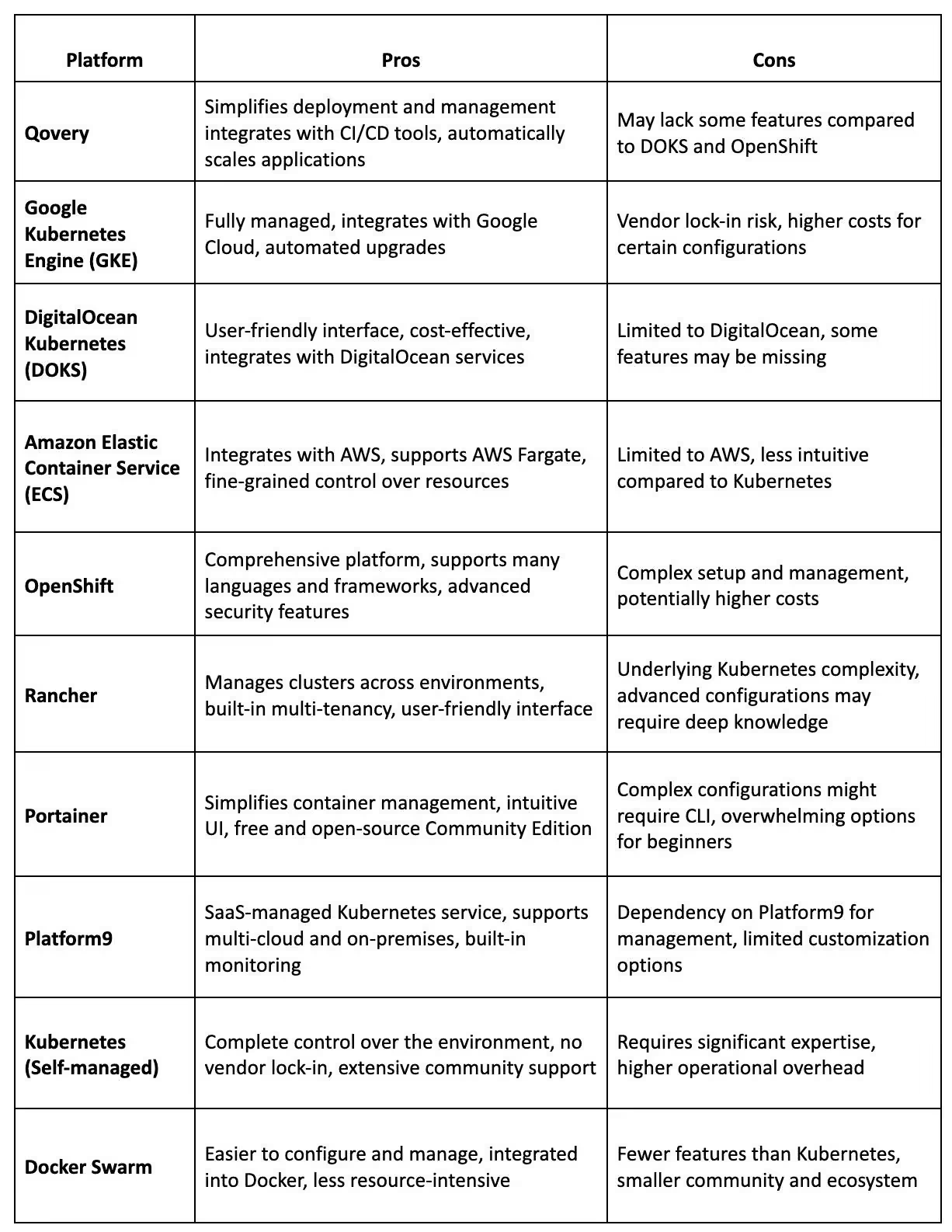
Conclusion
Each EKS alternative offers unique strengths tailored to different organizational needs—from GKE's robust infrastructure and seamless cloud integration to Portainer's user-friendly interface for managing containers. Whether you're a startup looking for cost efficiency with DOKS or an enterprise in need of comprehensive control with self-managed Kubernetes, there's a solution available.
Discover Why Developers and DevOps Teams Choose Qovery
If you’re looking for an alternative solution that goes beyond simple container management and offers a unified experience across local and production environments, give Qovery a try! Not only does Qovery streamline deployment and cloud application management, but it also automates many DevOps tasks, allowing you to focus on what you do best: developing.
- 🚀 Sign up for Qovery’s trial.
- 📅 Book a demo to discuss how Qovery can accelerate deployments for your team.

Suggested articles
.webp)



.svg)
.svg)
.svg)
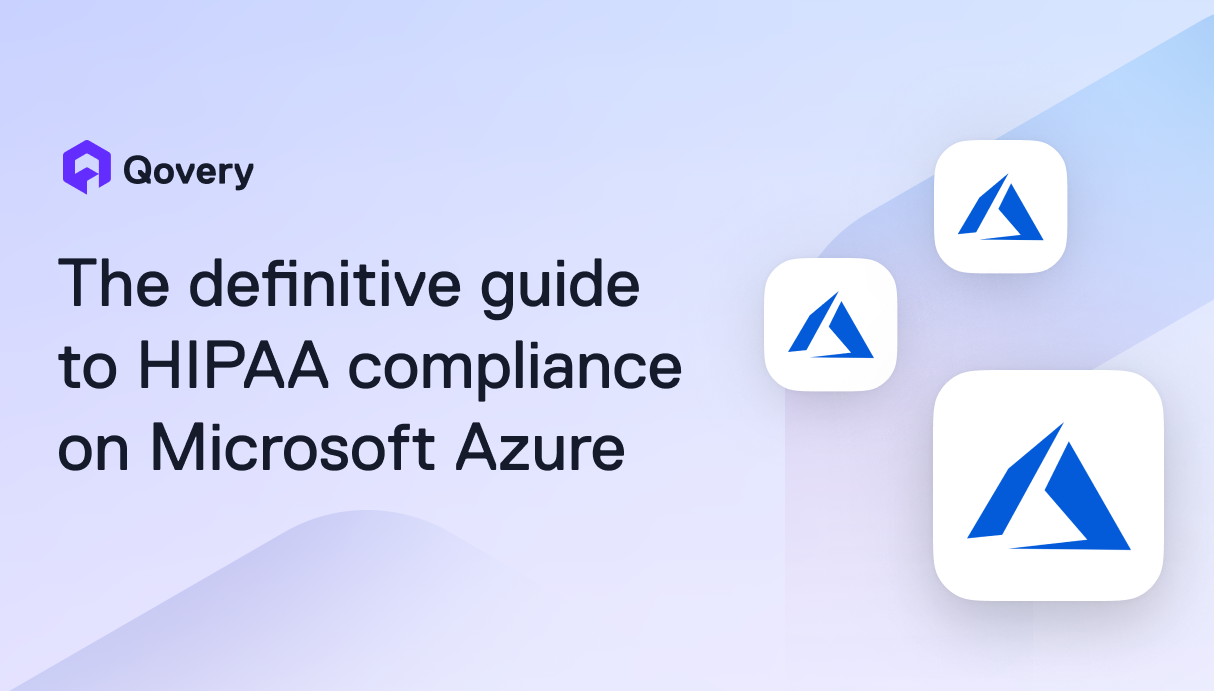


.png)
